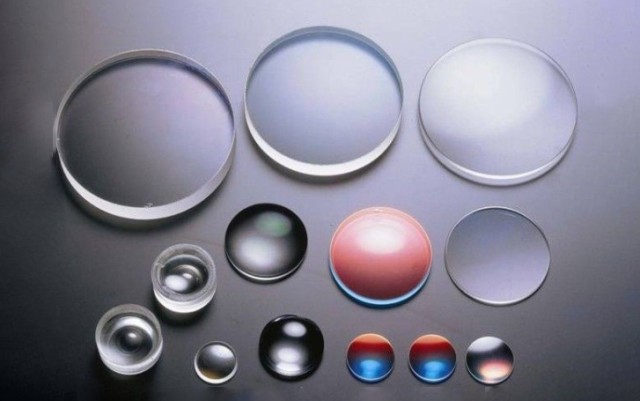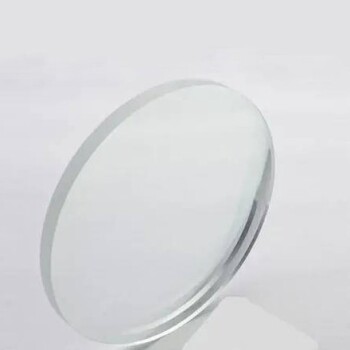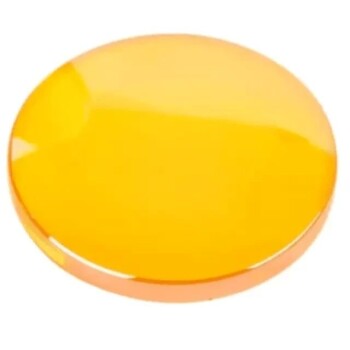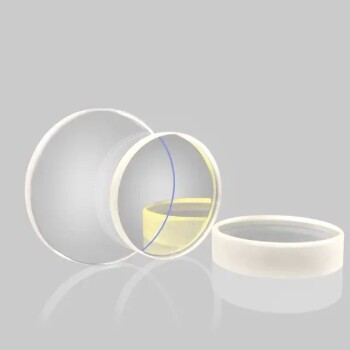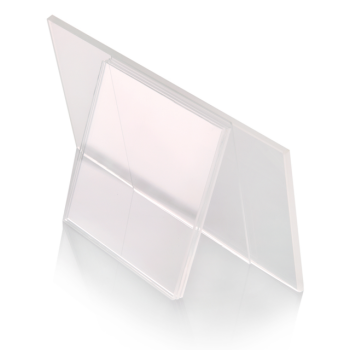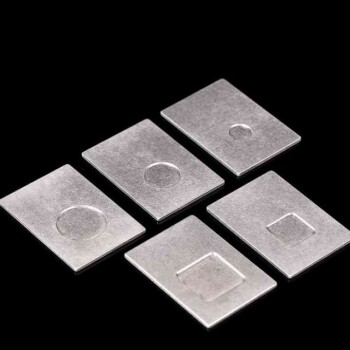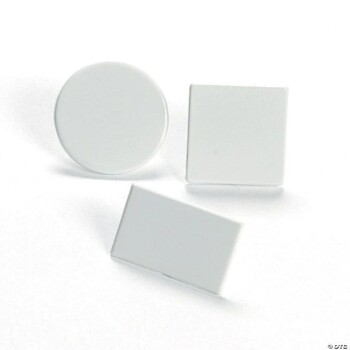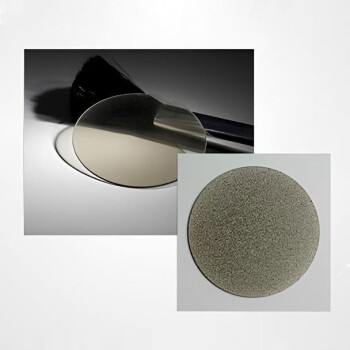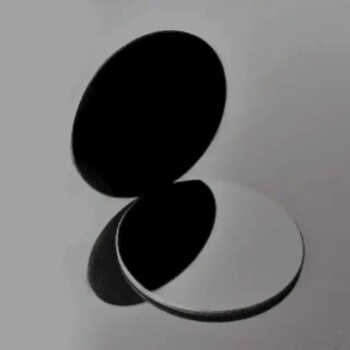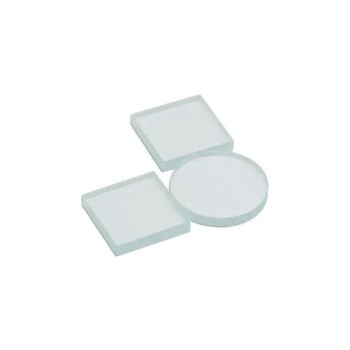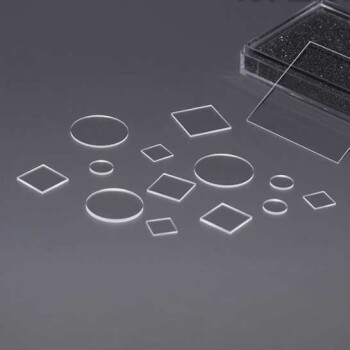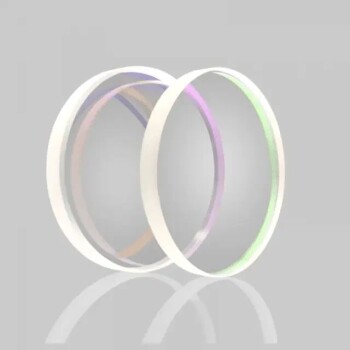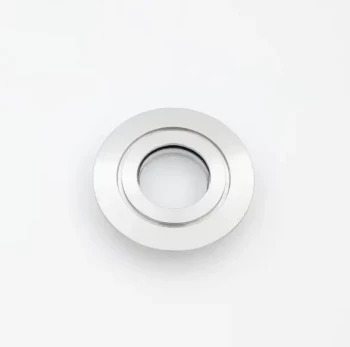Glass Materials
Chengdu Bright Glass Grades
Chengdu Bright offers two primary glass grades: K9 and H-K9L. Both of these materials are renowned for their exceptional transmittance across the visible to near-infrared spectrum, making them ideal for a wide array of optical applications.
The H-K9L grade stands out particularly due to its environmentally friendly composition. Unlike many traditional optical glasses, H-K9L is free from harmful elements such as lead, arsenic, and cadmium. This absence of radioactive elements not only enhances its safety but also broadens its applicability in sensitive environments where conventional materials might pose risks.
| Glass Grade | Transmittance Range | Key Features |
|---|---|---|
| K9 | Visible to NIR | High transmittance |
| H-K9L | Visible to NIR | Lead, arsenic, cadmium free |
The high transmittance of these glass grades ensures that they are suitable for applications requiring clear and accurate imaging or signal transmission across the specified spectral range. This makes them a preferred choice in fields such as optics, photonics, and various industrial and scientific instruments.

Schott Glass Grades
Schott Glass is renowned for its high-quality optical materials, with BK7 and N-BK7 being two of its most notable grades. These glasses exhibit optical properties that closely resemble those of Chengdu Bright's K9 and H-K9L, making them suitable for similar applications. Notably, N-BK7 is crafted without the inclusion of hazardous elements such as lead, arsenic, cadmium, and other radioactive substances, ensuring a safer and more environmentally friendly material.
The similarity in properties between Schott's BK7 and N-BK7 with Chengdu Bright's K9 and H-K9L lies primarily in their high transmittance across the visible to near-infrared spectrum. This characteristic makes them ideal for use in optical systems where clarity and minimal light loss are critical. The absence of toxic elements in N-BK7 further enhances its appeal in applications where material safety is a paramount concern.
In summary, Schott's BK7 and N-BK7 glass grades offer a robust and safe alternative for optical applications, leveraging their comparable properties to Chengdu Bright's K9 and H-K9L while prioritizing environmental and health considerations.
UV-Grade Fused Silica
JGS1 and UVFS are UV-grade fused silica materials that exhibit exceptional transmittance across a broad spectrum, spanning from the ultraviolet (UV) to the near-infrared (NIR) range. These materials are highly sought after in optical applications due to their ability to maintain high clarity and minimal absorption across these wavelengths.
One of the standout features of JGS1 and UVFS is their low coefficient of thermal expansion. This property ensures that these materials remain stable under varying temperature conditions, making them ideal for applications where thermal stability is crucial. Their ability to withstand thermal fluctuations without significant dimensional changes reduces the risk of optical distortions, which is particularly important in precision optics and high-energy environments.

In addition to their thermal properties, JGS1 and UVFS are known for their chemical durability and resistance to environmental factors. This makes them suitable for use in harsh conditions, where other materials might degrade or lose their optical integrity. Their long-term stability and performance are key reasons why they are preferred in applications ranging from UV spectroscopy to laser technology.
Furthermore, the manufacturing process of JGS1 and UVFS involves high purity silica, which is carefully fused to eliminate impurities and ensure uniform optical properties. This results in materials that are not only highly transparent but also consistent in their performance, making them a reliable choice for optical designers and engineers.
Fluoride Materials
Calcium Fluoride (CaF2)
Calcium fluoride, commonly known as fluorite, is a crystalline material renowned for its exceptional optical transparency across a broad spectrum, spanning from ultraviolet (UV) to infrared (IR) wavelengths. This unique property makes it an indispensable component in various high-precision optical applications, particularly in the field of laser technology.
In the realm of excimer lasers, calcium fluoride lenses and windows are frequently employed due to their ability to transmit the high-energy UV radiation generated by these lasers without significant absorption or scattering. This ensures that the laser output remains coherent and focused, which is crucial for applications such as semiconductor manufacturing, medical procedures, and scientific research.
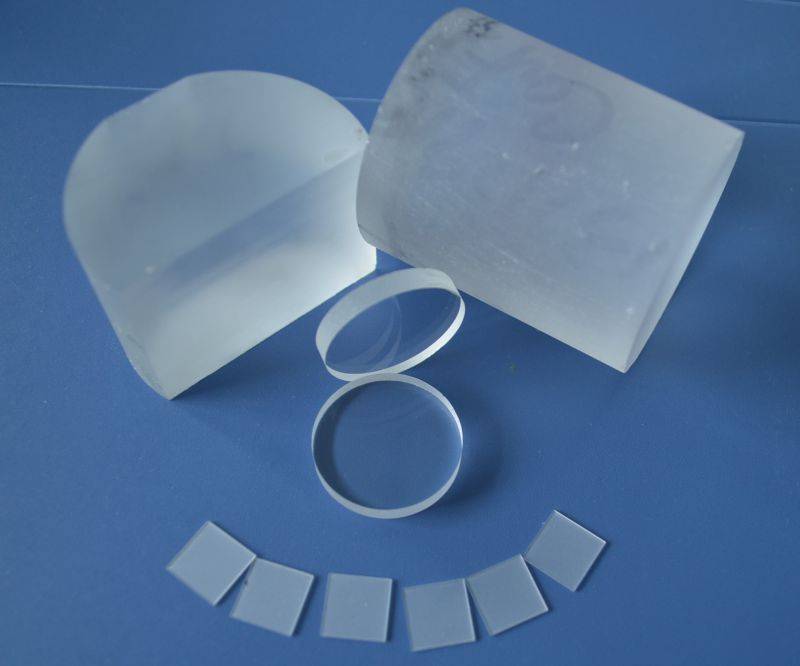
Moreover, calcium fluoride's low dispersion and excellent thermal stability further enhance its suitability for use in high-power laser systems. These characteristics minimize the risk of optical distortion and ensure consistent performance under varying operational conditions.
| Property | Value |
|---|---|
| Transmittance Range | Ultraviolet to Infrared (UV-IR) |
| Common Uses | Excimer lasers, UV optics, IR windows |
| Key Advantages | High transmittance, low dispersion, excellent thermal stability |
Calcium fluoride's versatility extends beyond laser technology, finding applications in UV optics, IR windows, and various other optical components where high transparency and minimal optical distortion are paramount. Its ability to maintain clarity across a wide spectral range underscores its importance in advancing modern optical systems.
Barium Fluoride (BaF2)
Barium fluoride (BaF2) is a notable optical material known for its exceptional transmittance across a wide spectral range, spanning from ultraviolet (UV) to infrared (IR) wavelengths. This unique property makes BaF2 highly sought after in various optical applications, particularly in the design of infrared windows and lenses.
In the realm of infrared optics, BaF2 stands out due to its ability to maintain high transmittance even in the mid-infrared region, where many other materials begin to degrade. This characteristic is crucial for applications that require clear and uninterrupted transmission of infrared light, such as in thermal imaging systems and infrared spectroscopy.
Moreover, BaF2 is not only valued for its transmittance but also for its mechanical and thermal properties. It exhibits a relatively low coefficient of thermal expansion, which ensures stability under varying temperature conditions, making it suitable for use in environments where thermal fluctuations are common. This stability is particularly important in the fabrication of precision optical components that must perform reliably over a wide range of temperatures.
In summary, Barium fluoride's high transmittance from ultraviolet to infrared, combined with its robust mechanical and thermal properties, positions it as a key material in advanced infrared optical systems. Its applications extend beyond conventional lenses and windows, into more specialized fields where precise and durable optical components are essential.
Magnesium Fluoride (MgF2)
Magnesium fluoride (MgF2) is renowned for its exceptional transmittance across a broad spectral range, extending from the ultraviolet (UV) to the infrared (IR) spectrum. This unique property makes MgF2 an indispensable material in various optical applications. Notably, it is frequently employed in the fabrication of transmittance enhancement films, which are crucial for improving the efficiency of optical devices operating in these spectral regions.
The high transmittance of MgF2 is attributed to its crystalline structure, which minimizes absorption and scattering of light. This characteristic is particularly beneficial in applications requiring clear and undistorted imaging or signal transmission. For instance, in the field of laser technology, MgF2 is often used to coat lenses and mirrors, thereby enhancing the performance of laser systems by reducing losses due to reflection and absorption.
In addition to its use in transmittance enhancement films, MgF2 is also valued for its mechanical and thermal stability. It can withstand high temperatures and mechanical stress, making it suitable for use in harsh environments. This robustness ensures that optical components coated with MgF2 maintain their performance over extended periods, even under challenging conditions.
Moreover, MgF2's compatibility with various deposition techniques, such as vacuum evaporation and sputtering, facilitates its integration into a wide range of optical systems. This versatility further amplifies its utility in both research and industrial settings, where the demand for high-performance optical materials is ever-increasing.
Other Optical Materials
Zinc Selenide (ZnSe)
Zinc selenide (ZnSe) is a versatile optical material renowned for its broad spectral transmission range, extending from 600 nm to 16 μm. This extensive range makes ZnSe particularly suitable for applications in the mid-infrared spectrum, where other materials may fall short. One of its most notable uses is in high-power carbon dioxide (CO₂) lasers, where its exceptional transparency and thermal stability are critical.
In the realm of CO₂ lasers, ZnSe is often employed as a zinc selenide window or lens material. The material's ability to transmit high-energy laser beams without significant absorption or degradation is crucial for maintaining laser efficiency and performance. Additionally, ZnSe's thermal properties allow it to withstand the high temperatures generated by these lasers, ensuring long-term reliability and minimal maintenance.
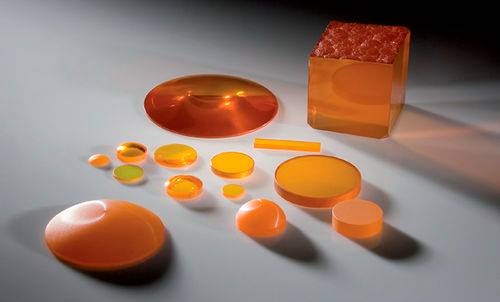
Beyond laser applications, ZnSe is also used in infrared optics, where its broad transmission range and durability make it an ideal choice for various optical components. Its chemical inertness further enhances its suitability for use in harsh environments, where other materials might corrode or degrade over time.
| Property | Value |
|---|---|
| Transmission Range | 600 nm - 16 μm |
| Primary Application | High-power CO₂ lasers |
| Thermal Stability | High, suitable for high-energy applications |
| Chemical Inertness | Excellent, resistant to corrosion |
The combination of these properties positions ZnSe as a cornerstone material in the development and operation of advanced optical systems, particularly those operating in the mid-infrared spectrum.
Silicon (Si)
Silicon (Si) is a highly versatile material, particularly renowned for its effectiveness in the spectral range of 1.2 μm to 8 μm. This range is crucial for various applications, especially in the realm of infrared technology. Silicon's unique properties make it an ideal choice for infrared reflectors, where it excels in reflecting infrared radiation efficiently.
In the context of infrared optics, silicon stands out due to its ability to maintain high reflectivity across a broad spectrum without significant degradation. This characteristic is particularly useful in applications requiring precise control over infrared wavelengths, such as in thermal imaging systems and infrared detectors. The material's stability and performance under varying conditions further bolster its utility in these high-demand fields.
Moreover, silicon's applicability extends beyond just reflectors. It is also utilized in the fabrication of lenses and windows designed for infrared spectroscopy. These components are essential in scientific instruments that analyze molecular structures and chemical compositions by measuring the absorption and emission of infrared light.
In summary, silicon's suitability for the 1.2 μm to 8 μm spectral range, combined with its robust performance in infrared reflectors and other optical components, underscores its importance in modern optical technology.
Germanium (Ge)
Germanium (Ge) is an essential material in the field of optics, particularly for applications requiring high transmittance in the mid-infrared spectral range. Its unique properties make it suitable for the spectral range of 2 μm to 16 μm, a region that is critical for various infrared technologies. This material is commonly employed in environments where temperatures do not exceed 100 ℃, ensuring its stability and effectiveness under these conditions.
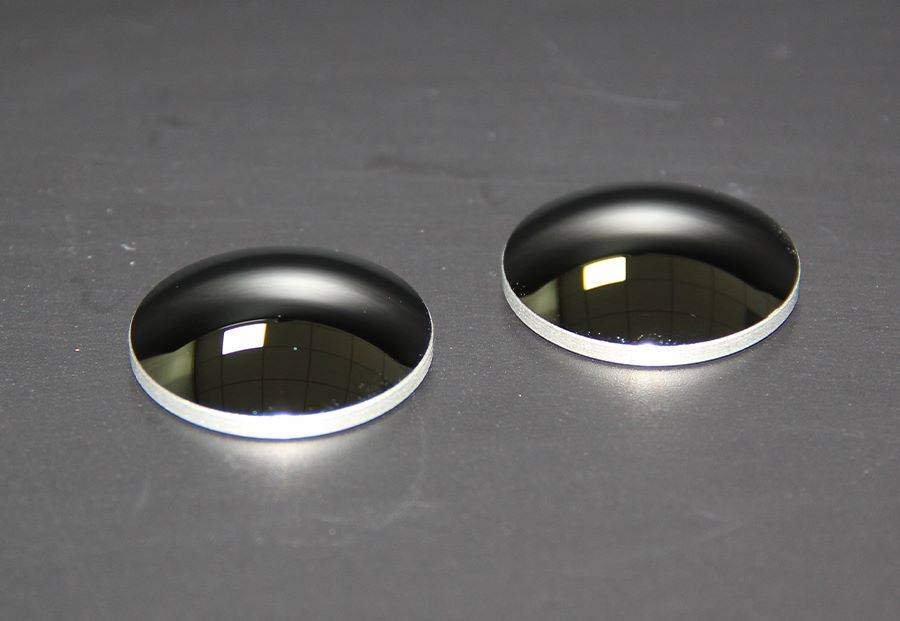
Germanium's use in optics is further enhanced by its ability to maintain high transmittance even in the presence of thermal stress, which is a significant advantage in high-power applications. This characteristic allows Germanium to be used in a variety of optical components, including lenses, windows, and filters, where its ability to transmit mid-infrared wavelengths is crucial.
In summary, Germanium's spectral range and temperature limitations make it a valuable material for mid-infrared optics, particularly in applications where maintaining high transmittance and stability under moderate thermal conditions is essential.
Sapphire (Al2O3)
Sapphire, a crystalline form of aluminum oxide (Al2O3), is renowned for its exceptional optical properties. It exhibits high transmittance across a broad spectrum, extending from ultraviolet (UV) wavelengths to the infrared (IR) range. This wide spectral coverage makes sapphire an invaluable material in various optical applications.
One of the standout features of sapphire is its chemical inertness, which ensures stability under diverse environmental conditions. Unlike many other optical materials, sapphire does not degrade or react with common chemicals, making it ideal for use in harsh environments. This property is particularly advantageous in industries where durability and longevity are critical, such as aerospace and defense.
In addition to its transmittance and chemical stability, sapphire is also known for its mechanical hardness and thermal conductivity. These attributes contribute to its widespread use in applications ranging from high-precision optical components to protective windows. The combination of these properties positions sapphire as a versatile and reliable choice in the realm of optical materials.
Related Products
- Optical Ultra-Clear Glass Sheet for Laboratory K9 B270 BK7
- Zinc Selenide ZnSe Optical Window Glass Substrate Wafer and Lens
- Optical Window Glass Substrate Wafer Single Double Sided Coated K9 Quartz Sheet
- Optical Window Glass Substrate Wafer Sheets Zinc Sulfide ZnS Window
- Optical Window Glass Substrate Wafer Quartz Plate JGS1 JGS2 JGS3
Related Articles
- How To Clean Laboratory Glassware - Part 2
- PTFE Cleaning Racks: The Ultimate Guide to Cleaning and Drying Labware
- A Step-by-Step Guide to Cleaning Laboratory Glassware
- Optical Quartz Plate: A Comprehensive Guide to Applications, Specifications, and Usage
- Comprehensive Guide to Atmosphere Furnaces: Types, Applications, and Benefits
